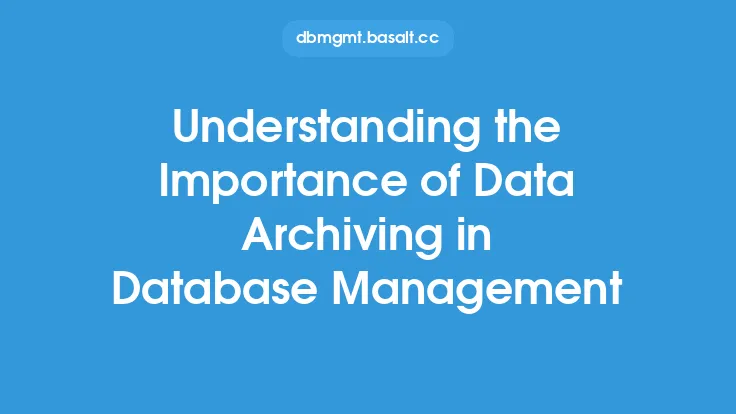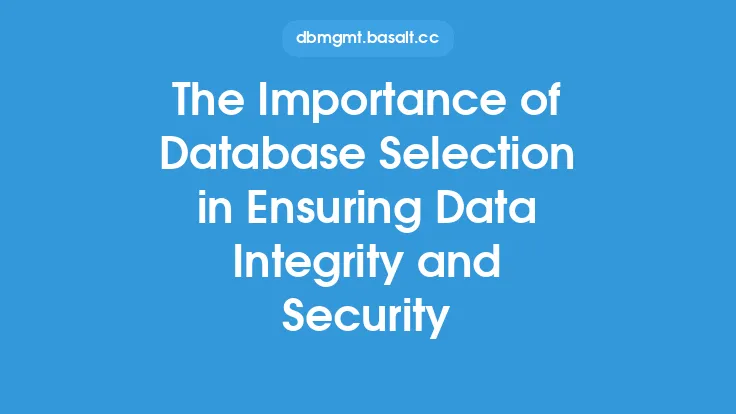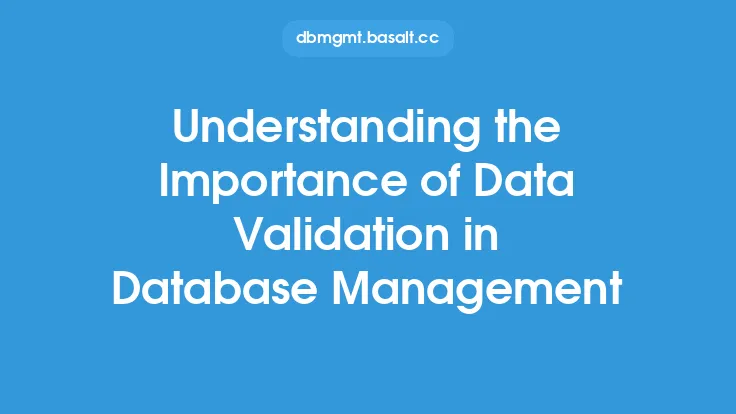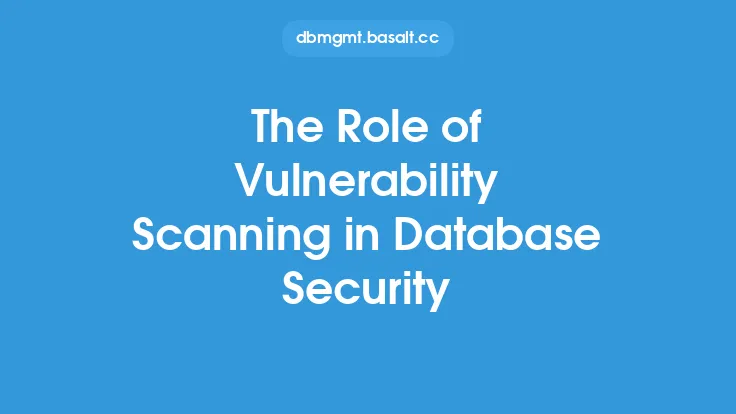Database security is a critical aspect of any organization's overall information security posture. As databases store sensitive and valuable data, they are a prime target for attackers. One of the key components of database security is vulnerability assessment, which plays a crucial role in identifying and mitigating potential security risks. In this article, we will delve into the importance of vulnerability assessment in database security and explore its significance in protecting databases from various threats.
What is Vulnerability Assessment?
Vulnerability assessment is the process of identifying, classifying, and prioritizing vulnerabilities in a database. It involves scanning the database for potential weaknesses, such as outdated software, misconfigured settings, and other security flaws. The goal of vulnerability assessment is to provide a comprehensive understanding of the database's security posture, enabling organizations to take proactive measures to remediate vulnerabilities and prevent attacks.
Why is Vulnerability Assessment Important in Database Security?
Vulnerability assessment is essential in database security because it helps organizations to identify and address potential security risks before they can be exploited by attackers. Databases are complex systems with multiple components, including software, hardware, and network infrastructure. Each of these components can have vulnerabilities that can be exploited by attackers to gain unauthorized access to sensitive data. By conducting regular vulnerability assessments, organizations can identify these weaknesses and take corrective action to prevent attacks.
Types of Vulnerabilities in Databases
There are several types of vulnerabilities that can affect databases, including:
- Software vulnerabilities: These are flaws in the database software that can be exploited by attackers to gain unauthorized access to the database.
- Configuration vulnerabilities: These are weaknesses in the database configuration that can be exploited by attackers to gain access to sensitive data.
- Network vulnerabilities: These are flaws in the network infrastructure that can be exploited by attackers to gain access to the database.
- Human vulnerabilities: These are weaknesses in the human element, such as weak passwords or inadequate training, that can be exploited by attackers to gain access to the database.
Benefits of Vulnerability Assessment in Database Security
The benefits of vulnerability assessment in database security are numerous. Some of the key benefits include:
- Improved security posture: Vulnerability assessment helps organizations to identify and address potential security risks, improving their overall security posture.
- Reduced risk of attacks: By identifying and remediating vulnerabilities, organizations can reduce the risk of attacks and prevent data breaches.
- Compliance with regulations: Vulnerability assessment is a critical component of compliance with various regulations, such as PCI-DSS and HIPAA.
- Cost savings: Vulnerability assessment can help organizations to avoid the costs associated with data breaches and other security incidents.
How to Conduct a Vulnerability Assessment
Conducting a vulnerability assessment involves several steps, including:
- Identifying the scope of the assessment: This involves determining which databases and systems will be included in the assessment.
- Gathering information: This involves collecting information about the database, including its configuration, software, and network infrastructure.
- Scanning for vulnerabilities: This involves using specialized tools to scan the database for potential vulnerabilities.
- Analyzing the results: This involves analyzing the results of the scan to identify potential vulnerabilities and prioritize remediation efforts.
- Remediation: This involves taking corrective action to remediate identified vulnerabilities.
Best Practices for Vulnerability Assessment
There are several best practices that organizations should follow when conducting vulnerability assessments, including:
- Conducting regular assessments: Vulnerability assessments should be conducted on a regular basis to ensure that the database remains secure.
- Using automated tools: Automated tools can help to streamline the vulnerability assessment process and improve its effectiveness.
- Involving multiple stakeholders: Vulnerability assessment should involve multiple stakeholders, including database administrators, security professionals, and compliance officers.
- Prioritizing remediation efforts: Remediation efforts should be prioritized based on the severity of the vulnerability and the potential impact on the organization.
Common Challenges in Vulnerability Assessment
There are several common challenges that organizations face when conducting vulnerability assessments, including:
- Limited resources: Vulnerability assessment can be a resource-intensive process, requiring significant time and effort.
- Complexity of databases: Databases can be complex systems, making it challenging to identify and remediate vulnerabilities.
- Evolving threats: Threats to databases are constantly evolving, making it challenging to stay ahead of potential vulnerabilities.
- Compliance requirements: Compliance requirements can be complex and time-consuming, making it challenging to ensure that vulnerability assessment is conducted in accordance with regulatory requirements.
Conclusion
In conclusion, vulnerability assessment is a critical component of database security. It helps organizations to identify and address potential security risks, improving their overall security posture and reducing the risk of attacks. By conducting regular vulnerability assessments, organizations can ensure that their databases remain secure and compliant with regulatory requirements. By following best practices and using automated tools, organizations can streamline the vulnerability assessment process and improve its effectiveness. Ultimately, vulnerability assessment is an essential step in protecting databases from various threats and ensuring the confidentiality, integrity, and availability of sensitive data.





